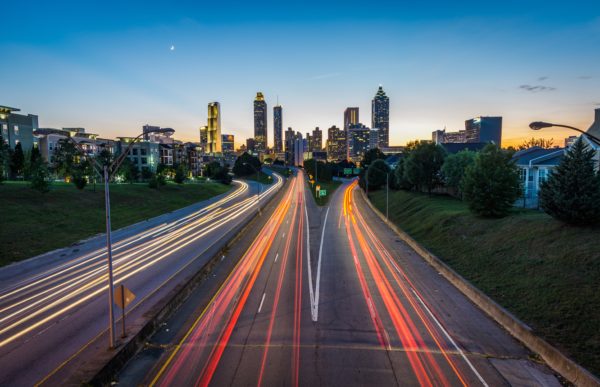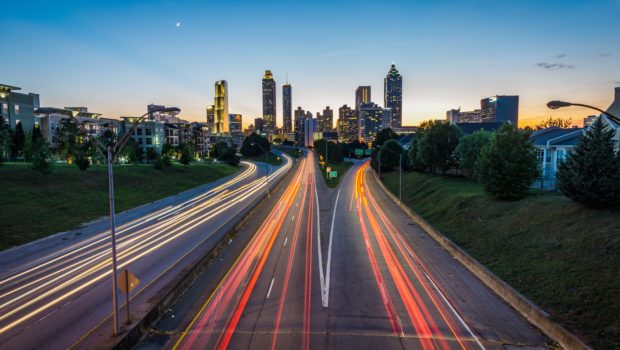The Future Commuter: Transport in Time
The transport industry has witnessed some incredible technologic developments over the course of the past 20 years.
But dramatic changes are still required, most of which relate closely to emissions.
Traffic has become a major issue for many of the world’s major cities, most of which are living under an umbrella of smog and pollution. Of the Traffic Index’s 403 cities, 75 per cent reported an increase in congestion year-on-year. Residents in Bogota for example, the world’s most congested city, lose 191 hours a year thanks to tailbacks.
Passenger flights, meanwhile, are dangerously contributing to global warming. Atmosfair, a German not-for-profit business, details how a return economy flight from London to New York emits around 986kg of CO2 — per passenger! This total per passenger is more than the average carbon footprint of people in 56 countries worldwide.
For these reasons, accompanied by a desire to make human life even more simplistic, tech moguls and innovative geniuses have been crafting new jaw-dropping concepts worthy of transforming the future of the transport industry.

In this article we take a look at three transport modes that are sure to set the world alight in years to come.
Airbus Pop Up
Italdesign and Airbus teamed up to create a concept that integrates both ground and air travel.
A zero-emission vehicle, Pop Up’s aim is to tackle the mobility challenges presented by megacities — namely traffic.
Traffic congestion is set to grow significantly by 2030. Pop Up will allow users to ascend from the ground in a fully flyable, autonomous capsule. Effectively, the Pop Up is a car with detachable wings.
Airbus notes: “The Pop Up vehicle combines the flexibility of a small two seater ground vehicle with the freedom and speed of a vertical take off and landing air vehicle.”
Once the passenger has reached their desired destination, both parts of the vehicle will return themselves, again fully autonomously, to their appropriate charging points ready for the next fare.
Hyperloop One
The future of train travel is nothing like you could have ever imagined.
Richard Branson, introducing the Hyperloop One, said: “Passengers and cargo will be loaded into a pod and accelerate gradually via electric propulsion through a low pressure tube. The pod lifts quickly above the track using magnetic levitation and glides at airline speeds for long distances due to ultra-low aerodynamic drag.”
Hyperloop One, a developed concept of Elon Musk’s open-source Hyperloop white paper, is effectively a personal train that travels at the speed of a plane, in a tunnel above the ground.
Passengers will begin by booking their ticket before travelling to their closest portal, which is effectively a station. Once at the portal, you will be scanned, as will your luggage, before your phone provides you with step-by-step instructions and directions towards your pod — climb in, and off you go.
Forbes suggests that in the age of COVID-19, “Hyperloop provides intelligent transportation that can move a distributed workforce across vast distances in a way that aims to be safer, cleaner, cheaper, and easier than airlines.”
Thermal scanners, self-cleaning equipment, and multi-sensory experience equipment are all just some of the features we can expect to see aboard this incredibly intelligent transport system.
Journeys from London to Edinburgh could now be completed in little over 30 minutes — just enough time to get yourself hooked up to the railway WiFi connection and catch up on some emails.
Starship Super Heavy
Millions around the world tuned into watch Elon Musk’s space launch in late May.
The successful launch of the SpaceX rocket has offered another potential paving stone in the path of the likelihood of his Earth-to-Earth rocket concept becoming a reality.
Reaching a max speed of 27,000km/h, the Starship Super Heavy features a pressurised cabin bigger than an Airbus A380 jet attached to the summit of a rocket which post-departure, will return itself to its take-off destination.
Capable of carrying around 1,000 passengers, the superspeed plane can fly from New York to Paris in 30 minutes — a stark difference from a flight that would usually take more than seven hours.
However long these modes of transport take to reach the mainstream, they will certainly be impressive when they eventually become reality!
Sources:
- https://www.inverse.com/article/57135-spacex-starship-rockets-will-get-you-from-paris-to-nyc-in-30-minutes
- https://www.forbes.com/sites/martineparis/2020/06/01/virgin-hyperloop-is-designing-travel-that-will-enable-you-to-work-from-anywhere/#5bcb93ad468d
- https://www.virgin.com/richard-branson/introducing-virgin-hyperloop-one-worlds-most-revolutionary-train-service
- https://www.airbus.com/newsroom/press-releases/en/2017/03/ITALDESIGN-AND-AIRBUS-UNVEIL-POPUP.html
- https://inrix.com/scorecard/
















